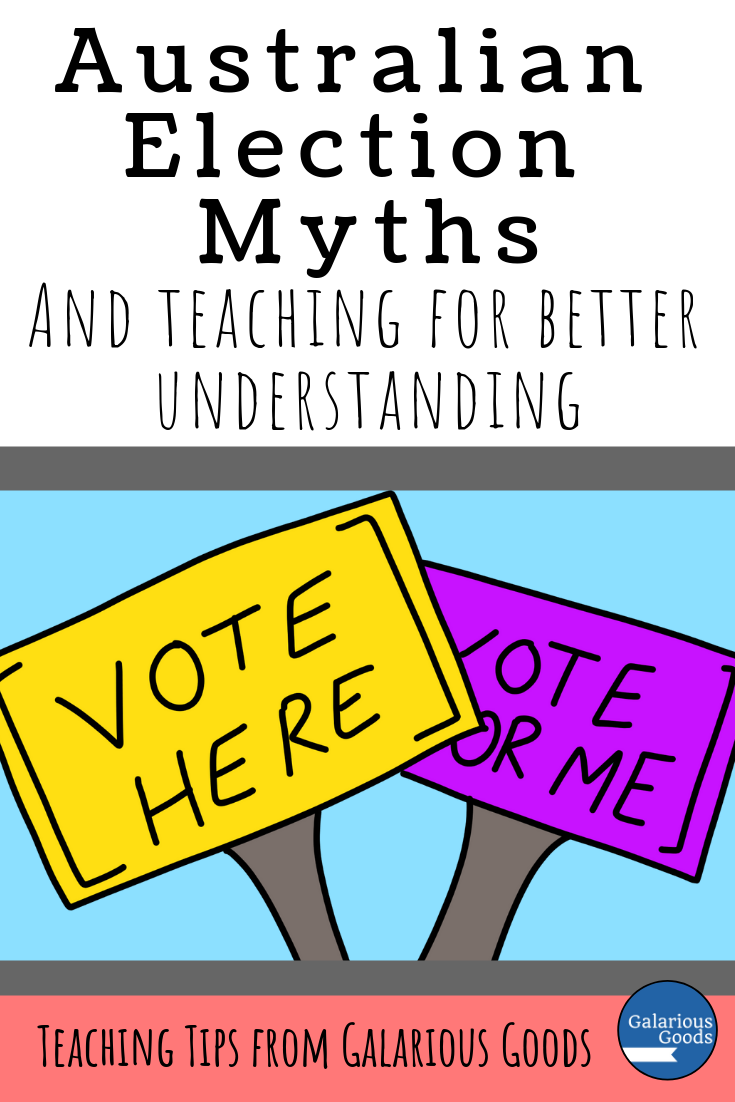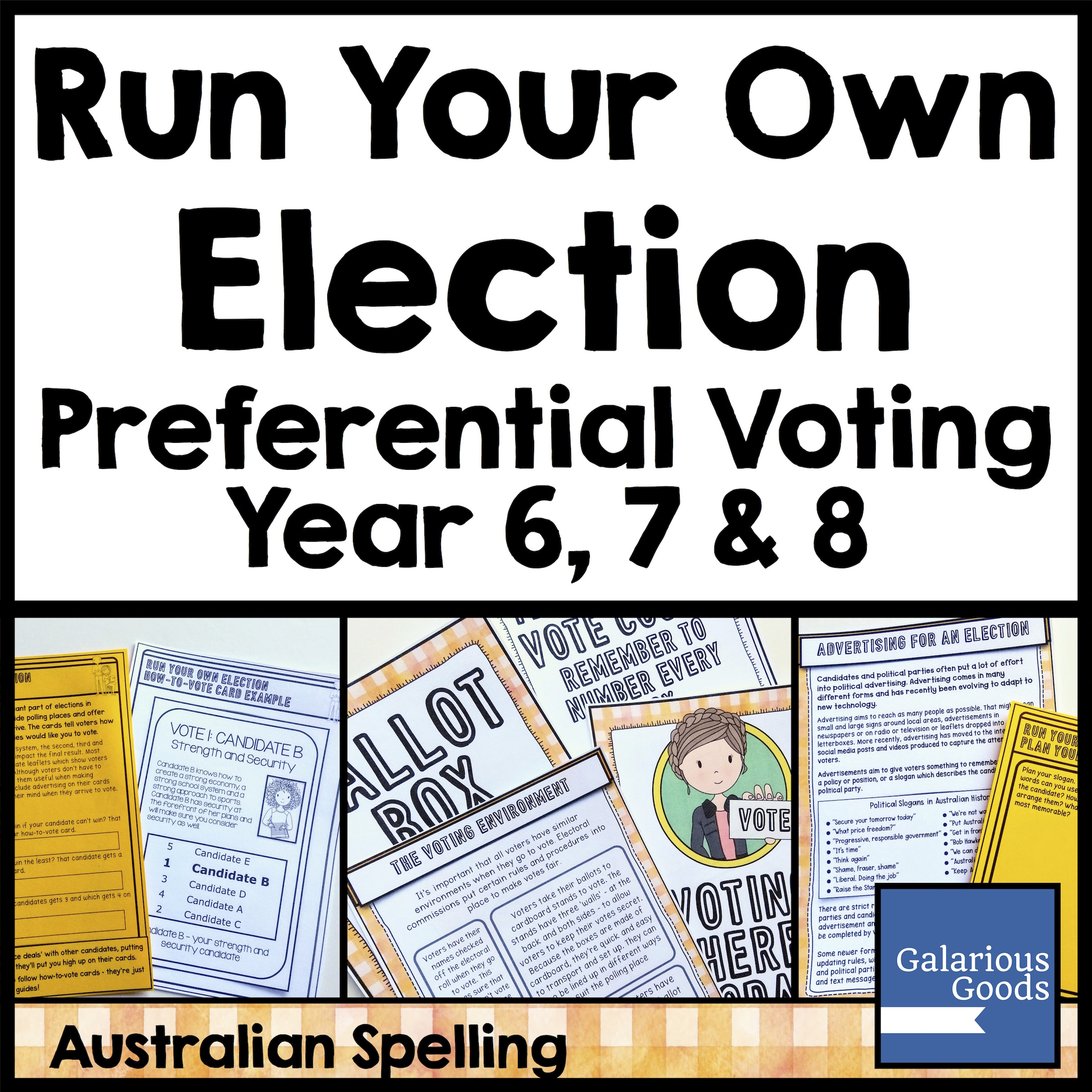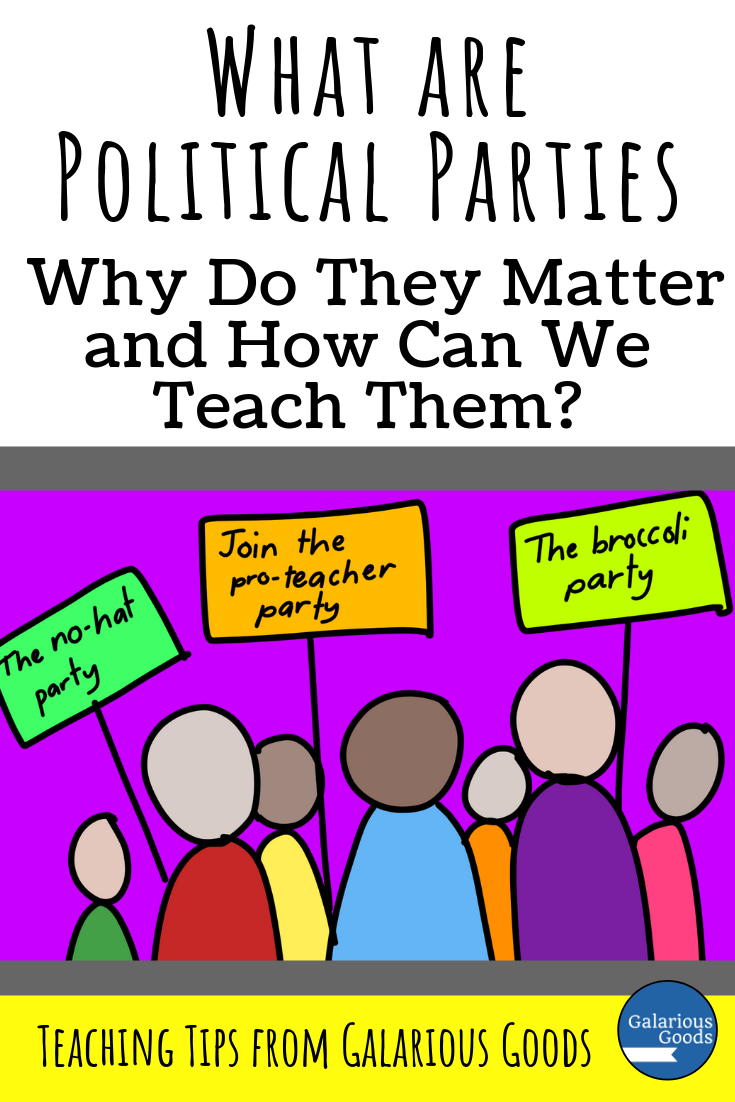Australian Election Myths (And Teaching Ideas for a Better Understanding of Elections)
/As elections approach in Australia, people begin to talk about voting. And while this talk is sometimes about policies and personalities (and sometimes about democracy sausages), sometimes misinformation creeps into the conversation.
How does this impact us as teachers? Well, teaching civics is part of the Australian curriculum. And teachers are in a unique position to arm their students with accurate information - the kind of information which will make our students more informed when the time comes for them to vote - and less likely to fall for misinformation when it comes up.
Myth: A blank vote is a vote for the government
Reality: A blank vote is regarded as an informal vote and counts for no candidate
Myth: If you don’t like anyone, you can cross them all out and write that you don’t want them. A new election will be held if a majority of people vote like this
Reality: Crossing out candidates and writing on the paper will make the vote informal and it will count for no candidate . . . but it also won’t trigger a new election.
The myths which lead people to informal voting are probably the most dangerous (and the most likely to be promoted by groups looking to interfere with elections in Australia). An informal vote happens when a ballot paper is not filled in correctly. This might mean that the voter has ticked or crossed instead of numbering, written their name on the ballot, not filled in the ballot at all or hasn’t completed the vote under the requirements of the election.
In the 2016 Federal Election, about 5% of House of Representative votes were informal, with about 1.25% of voters leaving them blank, 1.25% of voters numbering incorrectly and about 1% writing slogans or protests on the ballots. While these votes do not count for any candidate (and do not trigger a new election), these votes are totally legal. Compulsory voting requires voters to have their names checked off and to put their ballot paper in the box - but secret ballot means there are no ways to check - and no punishment - if the voter deliberately submits an informal vote.
So why should we correct this myth? People trying to make a protest vote might not understand that preferential voting is designed so the majority of voters get the candidate they dislike the least. By voting correctly, you have a much better chance of getting the candidate you dislike least. It’s a protest against the ones you dislike the most!
Teaching about informal votes: Informal voting is more likely to happen if there are a lot of candidates running. You can work with your students to discuss why this might be the case - and to create a campaign of strategies to help people vote correctly when there are a lot of candidates. Students can create posters or leaflets with their strategies.
Myth: A donkey vote doesn’t count as a vote
Reality: A donkey vote is a perfectly valid way to vote - and why candidates want their name on the top of the ballot paper!
A donkey vote happens when someone votes ‘down the ballot’ without thinking about it - they number the first box ‘1’, the second box ‘2’ and so on. Because every box is numbered it counts as a valid vote. The first candidate on the paper gets the first preference, the second candidate the second preference (if required) and so on.
People might donkey vote if they don’t care who wins, if they don’t understand how the voting system works or if they’re lodging a protest vote. However, a voter might look like a donkey voter - but honestly be voting the way they want to vote! (Especially when there’s only a couple of candidates)
The electoral commissions in Australia work really, really hard to put the candidates names randomly on the papers. There is a double blind draw (they draw once to decide the order the draw will go in and then draw again to work out where the candidates go on the paper). The person drawing the ballot is - indeed - blindfolded (leading to some interesting and not terribly flattering photos of ballot draws!)
Teaching about donkey votes: Investigate the ballot draw system with your students - you might even be able to find video of a draw online. Ask students to create diagrams to explain the system. Or ask them to create their own better system of creating a ballot draw. Students can also explore why we don’t use other systems for the ballot like alphabetically or in the order candidates are registered.
Myth: How to Vote Cards must be followed
Reality: How to Vote Cards are just guides
Myth: Preferences aren’t Important
Reality: Preferences can matter a lot
Whenever an election approaches, there’s a lot of discussion about How to Vote Cards. These are the cards which volunteers hand out as you walk into the voting booth. Candidates create them to try to convince people to vote for them - then for the people they like the most (or dislike the least).
But, even if you like a particular party or candidate, you can definitely preference your vote (vote 2, 3, 4 etc) any way you like. The how-to-vote cards are just guides. The surprising thing is that a lot of voters have no idea how they will vote until they turn up - so those cards can be influential!
Preferences are important though. Preferential voting can be difficult to understand - and it’s a whole blog post of its own! - but preferences can change the results of elections. It’s a system which allows the majority of voters to elect the people they dislike the least. It’s a little strange, but the preferences allow us to have a greater say about who represents us and which party is - or isn’t - in charge.
Teaching preferential voting in the classroom - You can find a resource with a closer look at preferential voting at the Galarious Goods store and the Australian Electoral Commission also have a video about preferential voting. Students can create diagrams or their own videos which explain preferential voting.
Myth: It’s not worth voting in my seat, the same person always wins
Reality: While some seats are ‘safe seats’ there are still benefits to voting.
It can be a real pain to get all excited to vote, only to see the same person - who you don’t like - get elected each time. It’s enough to make you wonder why you bother to vote when you live in a ‘safe’ seat.
A ‘safe’ seat is a seat which is likely to be won by the current candidate (or the same political party). However, there are examples of safe seats going to other candidates. Sometimes this might be because local people are tired of being a ‘safe’ seat and seek their own candidate (like in Indi in 2013); and sometimes a change in boundaries and population, as well as political changes can be enough to change the seat (like when the Prime Minister, John Howard, lost his own seat in 2007). When this happens, the votes are usually pretty close, so it’s definitely worth voting.
Voting also influences political funding. When a candidate gets more than a certain percentage of first preference votes, they are eligible for election funding. This can be especially helpful to smaller parties.
In almost all state and federal elections (Queensland is an exception), you’re voting for an upper house as well as a local representative. These votes are often closer, and a small number of votes can make a real difference, so these votes can help make changes, even when you’re in a safe seat.
Voting is also one of the responsibilities of being an Australian citizen. It’s a chance to become better informed, to have a say . . . and to get yourself a democracy sausage or two.
Teaching about voting in the classroom: Explore the campaign in Indi for independent representatives. It’s a fascinating story about voters having a say. You can also explore more about the responsibilities of voters with this resource from Galarious Goods.
Have you heard any myths about voting in Australia? Make sure you leave them in the comments below.
Find more information about voting at the Australian Electoral Commission website
A huge thanks to Mel, Heidi, Skyler and Kate for their help in uncovering election myths!





















